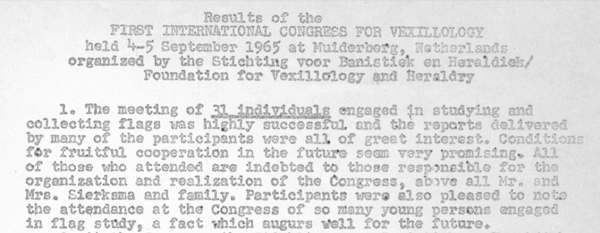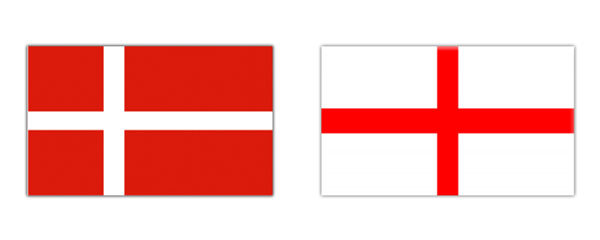Vexillology
§ Vexillology - what is this science about?
§ The emergence and development of vexillology
§ Vexillology - what is this science about?
Vexillology is an auxiliary historical science that studies flags and banners. Flags in one form or another have existed for quite a long time and have always carried a specific semantic load. The question of why, for example, the flag of a particular country looks a certain way is a question of vexillology
The very name of this science comes from the word vexillum - an ancient Roman standard. Many probably remember such standards by the abbreviation S.P.Q.R 'Senatus Populusque Romanus,' meaning 'The Senate and People of Rome'.
At the same time, scientific interest in this auxiliary historical discipline is not only focused on the drawings and inscriptions on flags and banners but also on their shape, material, and other physical characteristics. It is important not to confuse vexillology with heraldry - an auxiliary historical science studying coats of arms, the rules of their use, and composition. In some cases, these two disciplines can intersect - for example, if a coat of arms is depicted on a flag or banner, heraldic knowledge will be very useful.
However, strangely enough, actual coats of arms on banners and flags are not always present. Specific meanings can be conveyed through colors and even the shapes of the cloth. While coats of arms were typically created following strict heraldic laws - where each pattern is mandatory and signifies something - flags, in some cases, were designed without relying on any strict rules, and explanations like 'this color symbolizes this, and this one - that' would emerge later.
§ The emergence and development of vexillology
The term "vexillology" was proposed in 1958 by the American researcher Whitney Smith. In 1961, Whitney Smith and his colleague Gerhard Grahl created the first journal dedicated to flags - "The Flag Bulletin." In the following year, the Center for the Study of Flags was established, marking the beginning of systematic flag studies. Then in September 1965, the first International Congress on Vexillology was held in the Netherlands. According to the report prepared afterwards, this important event was successful. Below is a fragment of this report.

The next important stage in the development of the science occurred in 1969 when the members of the International Federation of Vexillological Associations (FIAV - "Fédération internationale des associations vexillologiques") were determined. The idea for such an association emerged in 1967, but the specific announcement of its members took place in 1969 at Boston University in Massachusetts during the Third Congress of Vexillology Researchers.
§ Practice and examples
Speaking of the practical side of the matter, it is worth mentioning the term "vexilloids." This term denotes objects studied by vexillology. In practice, there are two types of objects: flags and banners (standards). On the surface, both may seem quite similar since they visually carry specific information and both command respect. However, there are differences.
A banner or standard is typically a single item. For example, a specific military unit corresponds to a particular standard (which is carefully guarded in battle). As for flags, there can be many copies of them. They can be hoisted at customs, government institutions, etc. Therefore, the execution of flags and banners may differ.
What kind of research does vexillology actually involve? Let's consider a specific example. There are two well-known flags: the Flag of Denmark and the Flag of England.

Flag of Denmark (left) Flag of England (right)
It's evident that the flags of these neighboring states are opposite in color. Furthermore, researchers delve into the history of the Middle Ages when England and Denmark frequently warred with each other. After studying the chronology of battles and interactions, a hypothesis is posited that it was the military confrontation that formed the basis for the opposition of the flags. In order to clearly distinguish who was who on the battlefield, it was necessary for the flag to unambiguously identify the warring side. Opposite flags are quite difficult to confuse, hence the version about the reasons for such 'reverse similarity'.
A complete vexillological study typically brings specificity, which actually explains the details of the flag. The study of flags is a process that requires unconventional thinking and the ability to search for cause-and-effect relationships. By studying flags and banners, one can become acquainted not only with history but also with the geography, economy, and culture of different nations. Modern vexillological associations compile rankings of flags, provide evaluations, and give design recommendations.
Design recommendations
Here are some flag design recommendations:
☛ Simplicity Strive not to overload the flag with elements. A good flag should be easily drawable - it should be simple enough for a child to draw it from memory, even if only in general terms.
☛ Symbolism Try to use colors and symbols on the flag that are somehow related to the object. For example, an environmental organization may well use the color green for representational purposes, as it is undoubtedly associated with nature. Symbolism also implies that the object depicted on the fabric does not always have to be intricately detailed. Sometimes, schematics and a certain degree of minimalism make the item on the flag more recognizable and easily reproducible..
☛ 2-3 basic colors: This rule partially extends the idea from the previous recommendation. Excessive variety can blur the concept. It is better to avoid gradients because they are harder to print - this applies to both paper and fabric. After all, sometimes flags may even be embroidered on clothing..
☛ Universality Design the flag in a way that it looks dignified both in the wind and in calm weather. Model how this flag will look from different distances and under different lighting conditions. It is also important to consider the scalability of your design. This is a truly complex point that requires a certain amount of brainstorming and the consideration of various options.
Chronology of International Congresses on Vexillology ICV (International Congresses of Vexillology)
I) September 4-5, 1965 Meiderberg, Netherlands II) September 1-3, 1967 Zurich, Switzerland III) September 5-7, 1969 Boston, USA IV) June 24-27, 1971 Turin, Italy V) September 13-18, 1973 London, UK VI) April 16-20, 1975 Eijselmeer, Netherlands VII) June 10-14, 1977 Washington, USA VIII) June 26-29, 1979 Vienna, Austria IX) August 24-28, 1981 Ottawa, Canada X) September 25-30, 1983 Oxford, UK XI) May 16-31, 1985 Madrid, Spain XII) August 12-16, 1987 San Francisco, USA XIII) September 24-29, 1989 Melbourne, Australia XIV) June 30 - July 5, 1991 Barcelona, Spain XV) August 23-27, 1993 Zurich, Switzerland XVI) July 1-5, 1995 Warsaw, Poland XVII) August 10-16, 1997 Cape Town, South Africa XVIII) July 28 - August 2, 1999 Victoria, Canada XIX) July 23-27, 2001 York, UK XX) July 28 - August 1, 2003 Stockholm, Sweden XXI) August 1-5, 2005 Buenos Aires, Argentina XXII) August 5-10, 2007 Berlin, Germany XXIII) July 12-17, 2009 Yokohama, Japan XXIV) August 1-5, 2011 Alexandria, USA XXV) August 5-9, 2013 Rotterdam, Netherlands XXVI) August 31 - September 4, 2015 Sydney, Australia XXVII) August 7-11, 2017 London, UK XXVIII) July 15-19, 2019 San Antonio, USA
